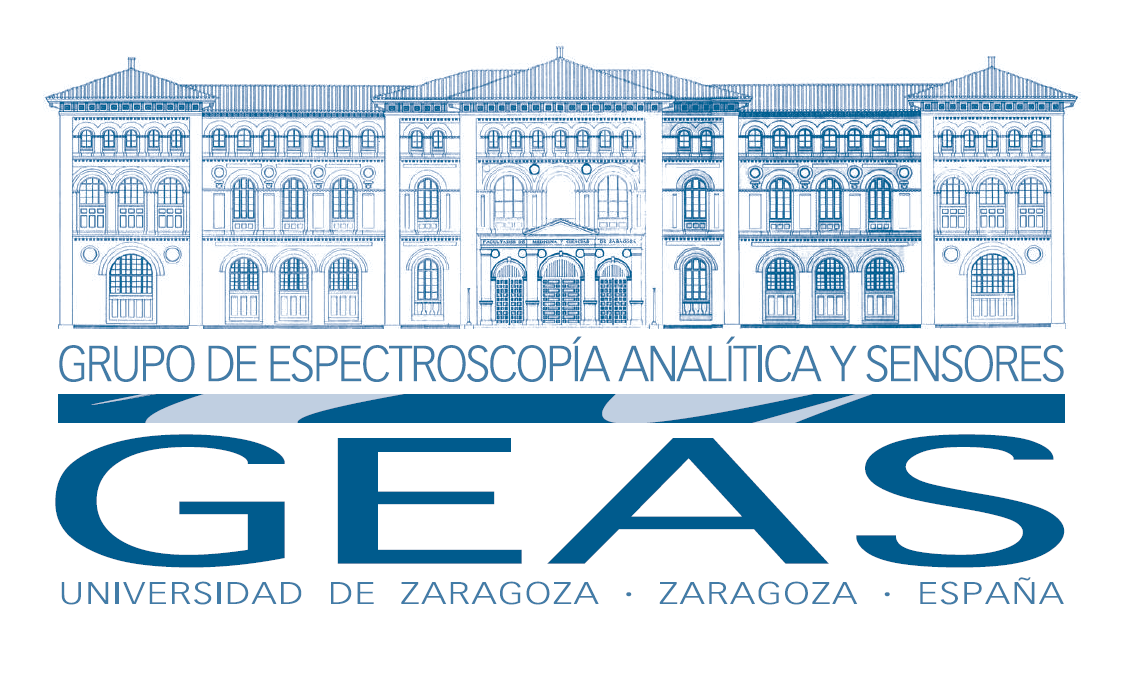
GEAS Research Lines
Our lines of research
,The research lines of the GEAS group correspond to the following three lines of work:
I. Analytical Nanometrology.
The research, development and application of new techniques, methods and analytical platforms for the detection, characterization, and quantification of both synthetic and natural nanomaterials in consumer products, the environment and biological systems, and individual particle and cell detection techniques.
II. (Bio) Electrochemical and optical analytical sensors.
The design, development, and application of catalytic (enzymes) and affinity (antibodies, aptamers) (bio)sensors for the determination in situ of contaminants, clinical parameters, and other parameters of interest in the field of environment, food safety, and biochemistry clinics.
III. Characterization of heritage materials.
Non-destructive instrumental techniques for the best knowledge and preservation of the artistic and historical heritage, with special emphasis on the study of ceramics, pigments and organic wastes.
GEAS
Analytical Nanometrology
Research and Development of new analytical techniques and methodologies for the characterization of artificial nanomaterials and nanoparticles in consumer products and strategic materials. Characterization of nanoparticles of Ag, Au, Co, Fe, SiO2, CeO2, metal oxides, etc.
Nanotechnology and analytical environmental nanoscience.
Multielemental chemical and functional speciation in natural nanomaterials of importance in ecosystems: NOM, colloids, phytoplankton, biocolloids, … etc. Application of techniques of Single Particle Analysis, Single Cell Analysis, dynamic radiation scattering, hydrodynamic chromatography and ultrafiltration techniques and AFFF (assymetric flow field fraction) for the separation of nanoparticles from Single Particle Analysis and Single Cell Analysis.
GEAS
Analytical spectroscopic and electrochemical sensors
Design and development of new catalytic (enzymatic) and affinity (antibodies, aptamers) biosensors, for the in situ quantification of endogenous clinical parameters, toxic organic molecules, contaminants, and other parameters of interest.
Electrochemical sensors for the detection and quantification of metallic nanoparticles. Electrochemical characterization of modified surfaces. Nanostructured analytical biosensors.
Applications of these (bio) sensors in the field of clinical biochemistry, environment and food safety.
GEAS
Characterization of strategic materials using non-destructive instrumental methods
Application of non-destructive instrumental techniques for the best knowledge of the artistic, monumental and natural heritage. Study of new materials.
Application of scanning electron microscopy (SEM), transmission (TEM) and field emission scanning (FESEM) techniques to the study of biological systems, materials, and nanomaterials of interest
Latest GEAS news
Agreements of co-tutelage of Doctoral Theses of the University of Pau-CNRS and the University of Zaragoza
Within the framework of the collaboration agreement for co-tutelage of Doctoral Thesis, between the University of Pau and the University of Zaragoza, the proposing body has approved in April 2019 two co-tutelage of Doctoral Thesis On the one hand, and under the...
Approved the formation of the ANTIB-PLAST consortium of the aCCeSS program, to which researchers from the Public University of Navarra and the University of La Rioja have been added
In May 2019, the proposal presented by the ANTIB-PLAST Consortium was approved in the Call aCCeSS Cooperation and Transfer Public-Private Consortia of the EU «Frontier innovations to solve two emerging agrofood problems in the aCCeSS territory: new nanobactericides...
GEAS group researchers present Master’s Thesis (University of Zaragoza)
Prof. Eduardo Bolea has directed and presented the following Final Master's Thesis reports at the University of Zaragoza, in the academic year 2017-18 and 2018-19: 1. Characterization of the size of synthetic nanoparticles by fractionation in flow by asymmetric flow...




